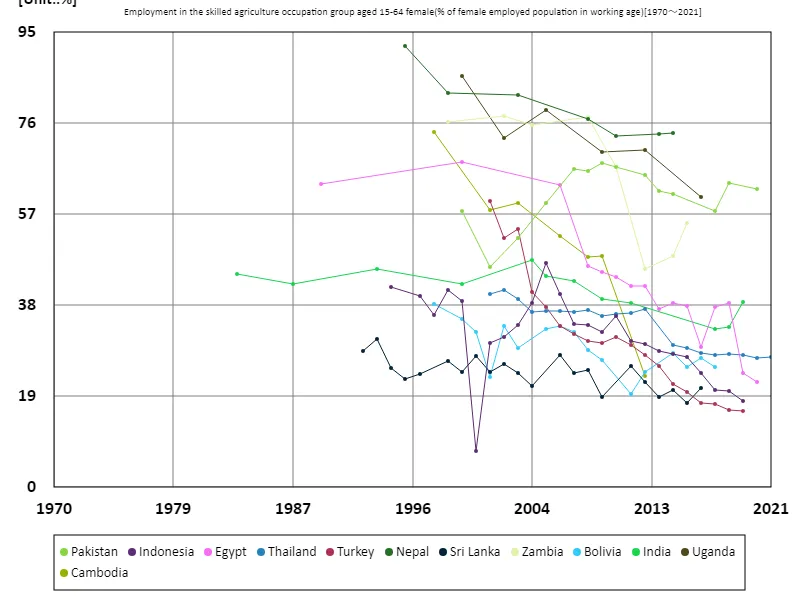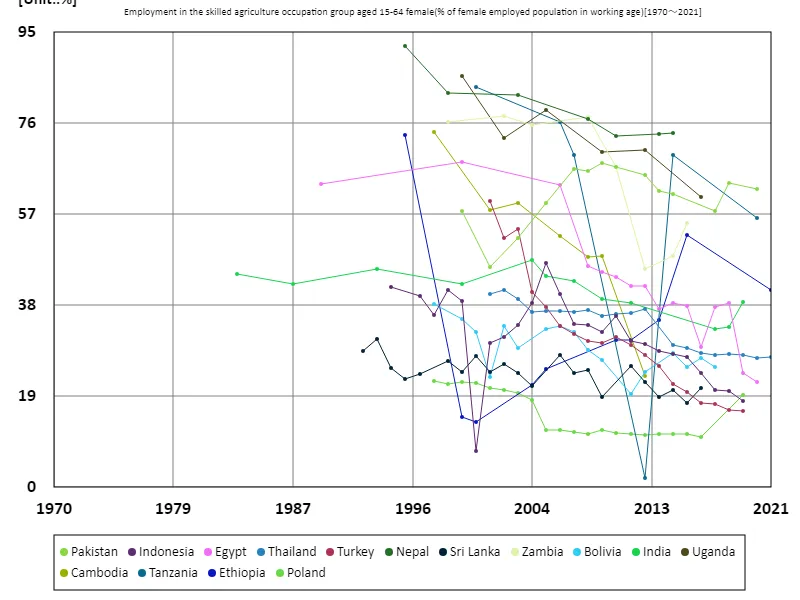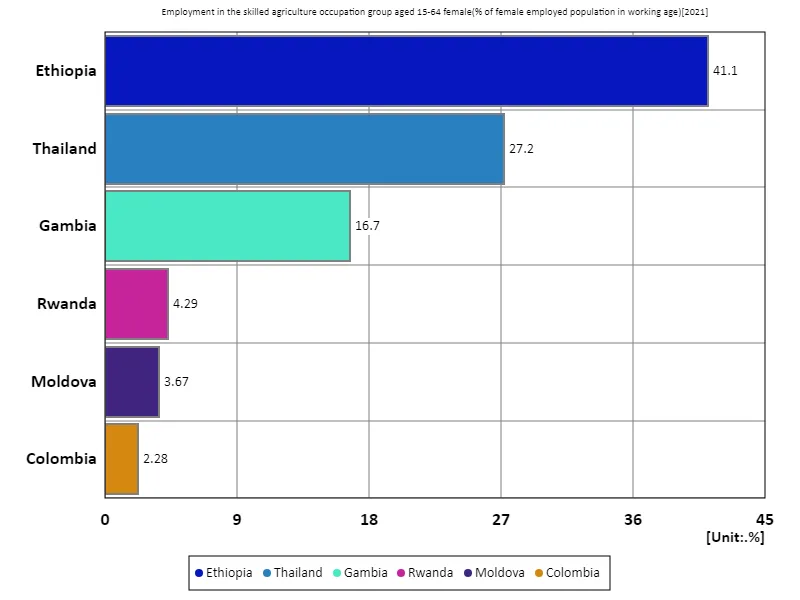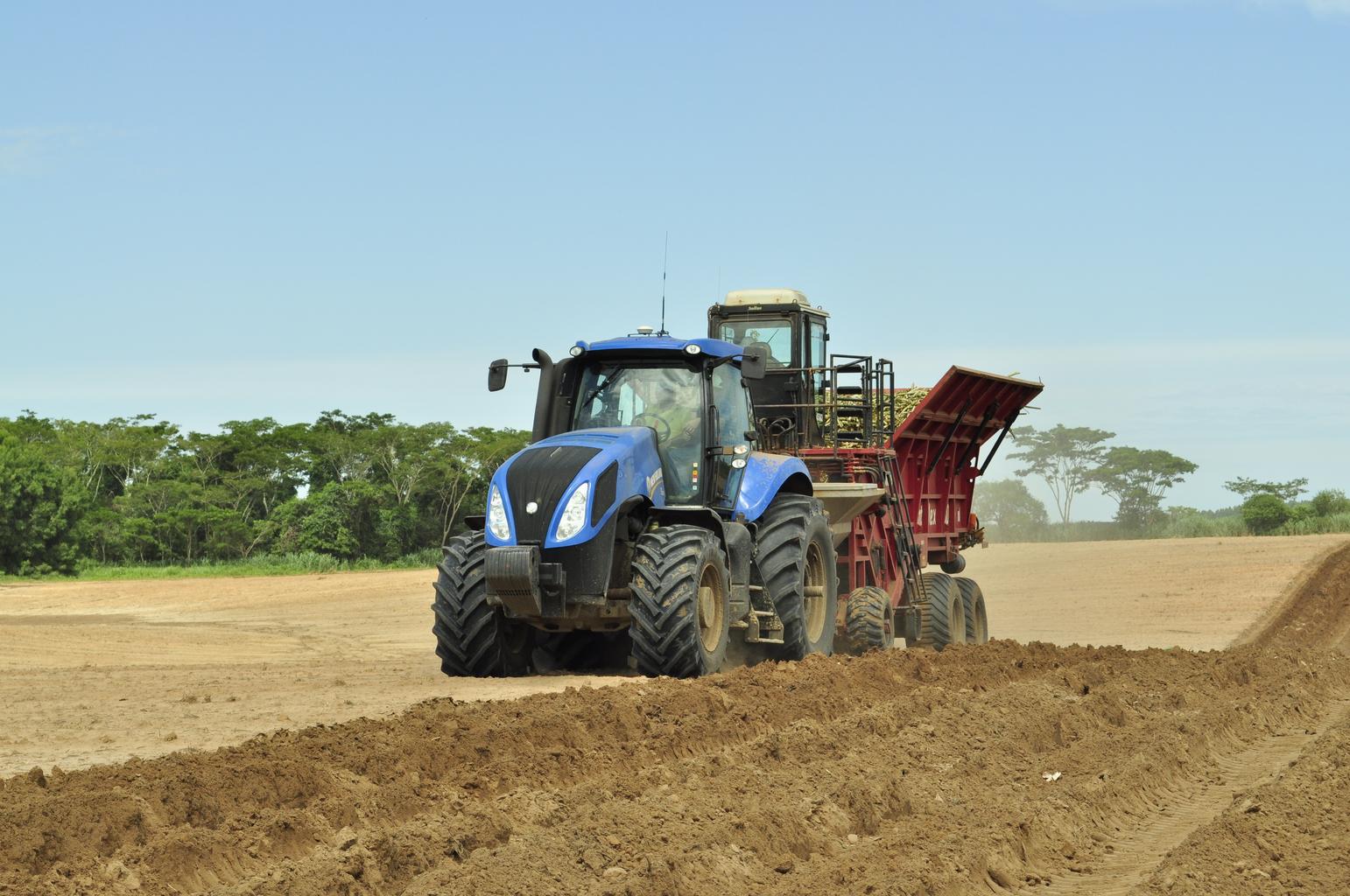- Abstract
- Employment rate in skilled agriculture for women aged 15-64 (percentage of working-age female employment in the workforce)
- Employment rate in the skilled agricultural sector for women aged 15-64 (percentage of working-age female employment in the workforce) (Worldwide)
- Employment rate in skilled agricultural sector for women aged 15-64 (percentage of working-age female employment in the labour force) (World, latest year)
- Reference
Abstract
According to 2021 data, Thailand has an employment rate of 27.2% in the skilled agricultural sector for women aged 15-64, a high figure compared to other countries. This trend is due to Thailand’s economic structure and the importance of agriculture. Agriculture is a central economic activity in Thailand, with many women playing key roles, particularly in the skilled agricultural sector. Agriculture is a traditional industry in Thailand, and women are considered an important factor in supporting the livelihood of their families and communities. As a result, women tend to be more employed in the skilled agricultural sector. Additionally, the high rate of employment in the skilled agricultural sector indicates that agriculture is labour intensive and reflects its role as the economic base of rural areas. This contributes to the succession of agricultural techniques and the maintenance of local communities. On the other hand, employment rates in the agricultural sector may fluctuate due to urbanization and industrialization, and similar trends are observed in countries other than Thailand. Overall, female employment rates in the skilled agricultural sector tend to be higher in countries where agriculture continues to play an important role.
Employment rate in skilled agriculture for women aged 15-64 (percentage of working-age female employment in the workforce)
In data covering the period 1983 to 2021, Nepal stands out as having the highest employment rate in the skilled agricultural sector for women aged 15-64 in 1995, at 92.1%. This figure shows how dependent Nepal’s agriculture is on women. Agriculture is the foundation of Nepal’s economy, and many women work in the fields, supporting the livelihoods of their families and communities. However, recent data shows that the figure has decreased to 80.4% in 2021 compared to its peak. This decline may be due to increasing urbanization and industrialization, changes in agricultural techniques, or overseas labor migration. This is particularly true as younger generations move away from agriculture and choose jobs in cities or abroad in search of better working conditions. Fluctuations in employment rates in the agricultural sector are also related to improvements in agricultural efficiency and mechanization. This is likely to change women’s role in the skilled agricultural sector and reduce their employment opportunities. Overall, fluctuations in female employment rates in the skilled agricultural sector reflect economic and structural shifts in society that are impacting women’s employment status as the role of agriculture declines.


The maximum is 92.1%[1995] of Nepal, and the current value is about 80.4%
Employment rate in the skilled agricultural sector for women aged 15-64 (percentage of working-age female employment in the workforce) (Worldwide)
Based on data from 1983 to 2021, Nepal recorded the highest employment rate in the skilled agricultural sector for women aged 15-64 in 1995 at 92.1%. This high employment rate reflects the fact that Nepal’s economy is heavily dependent on agriculture and that women in particular make up the majority of the agricultural workforce. Agriculture is the main source of income for many women, and in areas where traditional lifestyles remain strong, women’s role is extremely important. However, subsequent data shows that Nepal’s employment rate fell to 80.4% in 2021. This decline is driven by economic changes, particularly increasing urbanization and industrialization. Migration to urban areas, expansion of the non-agricultural sector, and participation in overseas labour markets have affected women’s employment in the agricultural sector. Mechanization and efficiency in agriculture has also led to a decline in labor demand, reducing employment opportunities for women in the skilled agricultural sector. Overall, fluctuations in female employment rates in the skilled agricultural sector reflect structural changes in the economy as well as social shifts. In agriculture-based countries such as Nepal, the role of the agriculture sector is changing with economic development, which has been shown to have a significant impact on women’s employment status.


The maximum is 92.1%[1995] of Nepal, and the current value is about 80.4%
Employment rate in skilled agricultural sector for women aged 15-64 (percentage of working-age female employment in the labour force) (World, latest year)
According to 2021 data, Ethiopia has the highest employment rate in the skilled agricultural sector for women aged 15-64 at 41.1%, compared to an average of 15.9% and an overall total of 95.3%. Ethiopia’s high employment rate reflects that agriculture remains the country’s main economic activity and that many women are employed in the agricultural sector. Agriculture is the main source of livelihood in Ethiopia, and women play an important role as a source of household income, especially in rural areas. However, the average employment rate of 15.9% and the overall total of 95.3% show that female employment in the skilled agricultural sector varies widely across countries. Countries with high employment rates are primarily located in regions that are highly dependent on agriculture and many of them have poor economic diversification. The agricultural sector remains an important source of employment for many women, especially in low- and middle-income countries where agriculture is often the primary source of employment. Overall, women’s employment in the skilled agricultural sector reflects the importance of agriculture and the economic structure of the region, and their role is likely to change as the economy develops. In countries where agriculture is the primary occupation, female employment rates are high, indicating the important economic role of the agricultural sector.


The maximum is 41.1% of Ethiopia, the average is 15.9%, and the total is 95.3%



Comments